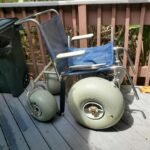Understanding Mobility Challenges
Mobility challenges encompass a range of difficulties individuals may face in their ability to move freely and independently. These challenges can arise from various medical conditions, injuries, or age-related changes that significantly impact one’s quality of life. Understanding mobility challenges is essential as they can affect individuals physically, emotionally, and socially, altering their interactions with the world around them.
Common conditions that lead to mobility issues include arthritis, multiple sclerosis, and various types of injuries. Arthritis, characterized by inflammation of the joints, can cause severe pain and stiffness, making it increasingly challenging to perform daily tasks such as walking or climbing stairs. Multiple sclerosis is a progressive disease affecting the central nervous system, resulting in diverse symptoms, including fatigue, muscle weakness, and coordination difficulties, which can diminish mobility over time. Injuries, whether from accidents or surgeries, can also result in temporary or permanent mobility constraints, necessitating adaptations in daily routines.
The impact of mobility challenges extends beyond physical limitations. Individuals may experience feelings of frustration or sadness as they navigate their newfound difficulties, which can lead to social withdrawal or decreased engagement in previously enjoyed activities. Cognitive awareness of these challenges often enhances the ability to seek appropriate support and solutions, such as the consideration of mobility aids like wheelchairs. Each person’s experience with mobility loss is unique; thus, understanding individual narratives can foster empathy and support among friends, family, and caregivers.
Overall, recognizing and addressing mobility challenges is crucial in facilitating a better understanding of when assistive devices may be needed, ultimately aiming to enhance the quality of life for those affected.
Signs That Indicate a Need for Assistance
Determining whether a wheelchair may be necessary involves careful observation of one’s mobility and overall physical condition. There are several key indicators that can suggest an individual might benefit from using a wheelchair. One prominent sign is difficulty walking; if a person finds it increasingly challenging to walk, take steps, or maintain balance, it may be time to consider a wheelchair for enhanced mobility.
Frequent falls represent another critical factor. Those who experience regular falls may find their ability to move independently compromised, leading to increased safety risks and a decreased quality of life. A wheelchair can provide stability and reduce the likelihood of falls, enabling individuals to navigate their environment with greater confidence.
Exhaustion after short distances is also an important symptom to regard. If someone tires quickly after walking only a short distance, this may indicate that a more efficient means of transportation, such as a wheelchair, is needed to support daily activities. This symptom can significantly impact an individual’s ability to participate in social events, attend appointments, and perform essential tasks.
Lastly, reliance on others for mobility can be a significant indicator that a wheelchair might be necessary. If an individual frequently finds themselves needing assistance from family, friends, or caregivers to move around effectively, it could be beneficial to evaluate the situation further. Adopting a wheelchair can foster independence, allowing people to regain control over their mobility and improve their overall well-being.
By recognizing these signs, individuals can take proactive steps towards identifying the need for assistance, including evaluating the advantages of using a wheelchair for enhanced mobility and improved quality of life.
Evaluating Daily Activities and Routines
Mobility issues can significantly impact one’s ability to perform daily activities and maintain independence. Assessing the extent of these challenges is crucial in determining whether a wheelchair may be necessary. Individuals should begin by reflecting on their ability to accomplish essential tasks such as grocery shopping, attending medical appointments, and engaging in social activities. This self-evaluation may help illuminate the difficulties faced in performing these daily routines.
Consider the specific activities that are becoming increasingly challenging. For instance, if visiting the grocery store results in physical exhaustion, difficulty navigating aisles, or the inability to lift items into a cart, it may indicate that mobility is compromised. Furthermore, undertake a thoughtful examination of how frequently assistance is needed from others to complete such tasks. A growing reliance on family or friends can undermine the sense of independence, which is often a key aspect of one’s overall well-being.
Additionally, it is essential to analyze transportation aspects, such as getting to medical appointments. If driving or using public transportation is causing stress or is no longer feasible, it could point to the need for alternative modes of mobility. Evaluate whether attending social events has become less frequent due to physical limitations. The inability to participate in gatherings can contribute to feelings of isolation and depression, aspects that greatly affect mental health.
Ultimately, maintaining independence is an important consideration when evaluating mobility challenges. Should the assessment reveal a pattern of difficulties that is impacting daily life, exploring options such as a wheelchair may be warranted. Taking proactive steps to address mobility issues can lead to better quality of life and restore the ability to engage meaningfully in everyday activities.
Consulting Healthcare Professionals
The decision to utilize a wheelchair is often complex and varies significantly from one individual to another. Consulting healthcare professionals, such as doctors, physiotherapists, and occupational therapists, is a crucial step in this process. These experts bring a wealth of knowledge and experience that can guide individuals and their families when considering mobility needs.
Initially, a thorough assessment is essential. Healthcare professionals will typically conduct physical examinations to evaluate an individual’s strength, mobility, and overall health. This may include assessing gait patterns, joint range of motion, balance, and endurance, all of which are integral factors in determining the suitability of a wheelchair. In some cases, additional tests—such as imaging studies or functional mobility assessments—may be recommended to provide a comprehensive view of the user’s capabilities.
Once the assessment is complete, healthcare professionals will discuss the findings and help facilitate the decision-making process. They can provide recommendations on the most appropriate type of wheelchair—manual or powered—based on individual needs. Importantly, they can also advise on adjustments or adaptations that may enhance independence and safety while using the wheelchair.
Moreover, healthcare professionals play a vital role in educating individuals about using a wheelchair effectively. This can include guidance on proper techniques for getting in and out of the wheelchair, transferring safely, and handling various terrains. Additionally, they can offer insights into preventive measures to avoid potential complications, such as pressure sores or muscle atrophy due to prolonged immobility.
In summary, consulting healthcare professionals is not merely a recommendation but a necessary step in ensuring that individuals make informed decisions about their mobility when considering a wheelchair. This collaborative approach not only enhances the individual’s quality of life but also empowers them with the resources and knowledge to navigate their unique mobility challenges effectively.
Exploring Wheelchair Options
Choosing the right wheelchair is a crucial decision that can significantly impact one’s quality of life. There are primarily two categories of wheelchairs that individuals might consider: manual and electric models. Manual wheelchairs, designed for self-propulsion, are generally lighter and more portable, making them suitable for individuals who have sufficient upper body strength. They can be folded for ease of transport, and their lower cost is often an appealing factor for many users and their families.
On the other hand, electric wheelchairs, also known as power chairs, offer enhanced mobility with minimal physical effort. Ideal for individuals with limited arm strength or endurance, these devices come equipped with battery-operated motors. They provide a greater range of movement and can be more comfortable for extended use, appealing to those who may spend considerable time in their wheelchair. Additionally, electric models can be beneficial for navigating varied terrains, offering stability and support in outdoor environments.
When selecting a wheelchair, individuals must consider several factors. Lifestyle needs play a critical role; for instance, an active person may lean towards a manual chair for its lightweight nature, while someone who requires more extensive use throughout the day might find an electric wheelchair more appropriate. Physical compatibility is another key aspect; it is essential that the chair fits the user comfortably, considering factors such as seat width, depth, and height to prevent discomfort and promote good posture.
Budget is a significant consideration as well. Prices for wheelchairs can vary widely depending on the type, features, and customization options. It is vital to weigh the long-term benefits and costs associated with each model before making a decision. Ultimately, finding the right fit is essential in ensuring independence and enhancing the overall quality of life for the user.
Trial and Adaptation Period
Once an individual acquires a wheelchair, a crucial trial and adaptation period begins. This phase is essential for users to familiarize themselves with the new mobility aid, practice maneuvering it in different environments, and adjust to the accompanying changes in independence. During this period, individuals will not only learn the physical aspects of operating the wheelchair but also confront various emotional responses triggered by this significant change in their lives.
Initially, users should engage in practice sessions in familiar surroundings. This might include navigating through the home, utilizing public spaces like shopping centers, and mastering the transition from surfaces such as carpet to tile. These environments may vary significantly, so adapting one’s technique is vital. Users should focus on understanding the dimensions and weight of the wheelchair, as well as the pressure required for moving in various settings. Additionally, they must identify barriers that may present challenges, such as curbs, door frames, and elevators.
Moreover, the shift to relying on a wheelchair often results in a reevaluation of personal independence. Many individuals experience feelings of freedom and empowerment, while others may feel a sense of loss or hesitancy about their newfound reliance on the aid. It’s important to acknowledge these emotional responses and seek support from family, friends, or support groups who can provide encouragement and understanding during the adjustment period. This emotional aspect can significantly influence a user’s overall experience and willingness to embrace the wheelchair as part of their daily routine.
Over time, as users become more accustomed to their wheelchairs, they can gain confidence and a sense of control over their mobility. Patience and persistence are crucial during this adaptation phase, as overcoming initial challenges may lead to greater independence and an improved quality of life.
Support Systems and Community Resources
Individuals transitioning to wheelchair use often benefit significantly from various support systems and community resources. These can include local organizations dedicated to assisting individuals with mobility challenges, as well as online communities that offer a space for sharing experiences and advice.
Many cities have non-profit organizations that focus on empowering wheelchair users. These organizations typically provide resources such as mobility equipment, financial assistance for necessary modifications, and advocacy for accessibility rights. Engaging with these local resources can be instrumental for families seeking specific guidance tailored to their community’s needs. For instance, organizations like the National Multiple Sclerosis Society or the Christopher and Dana Reeve Foundation offer programs that aid wheelchair users through educational materials, peer support groups, and workshops on living with mobility impairments.
Online communities also serve as invaluable platforms for wheelchair users and their loved ones. Social media groups and forums provide virtual spaces where individuals can connect, share personal stories, ask questions, and find solutions to common challenges. These communities foster a sense of belonging and offer emotional support, which can be crucial during transitions to wheelchair dependency. Websites dedicated to disability advocacy and lifestyle adaptations further enhance access to information, featuring articles, videos, and user-written content that explores practical tips for wheelchair users.
Rehabilitation programs are an additional resource that should not be overlooked. Many hospitals and rehabilitation facilities offer comprehensive programs focusing on physical therapy and occupational therapy tailored to wheelchair users. These programs not only assist individuals in adapting to their new mobility but also facilitate community integration and physical wellness. Overall, the combination of local organizations, online resources, and rehabilitation programs provides a robust support network for individuals considering or currently using wheelchairs.
Maintaining a Positive Mindset
The decision to transition to wheelchair use often brings a plethora of emotional responses, making it crucial to address the mental and emotional aspects of this change. Adapting to the need for a wheelchair can initially be daunting; however, with a positive mindset, individuals can navigate this journey with resilience and optimism. One of the primary strategies to cultivate a positive outlook is to accept and acknowledge the changes brought about by reduced mobility. Recognizing that this is a part of life can foster a sense of empowerment rather than defeat.
Seeking community support is another vital element in maintaining a positive mindset. Support groups, whether online or in person, provide a platform for individuals to share experiences, challenges, and coping strategies. Engaging with others who are going through similar circumstances can alleviate feelings of isolation and promote a sense of belonging. Through active participation in these communities, individuals can gain insights that help them reframe their thinking and develop resilience in the face of adversity.
Moreover, discovering new hobbies or interests that accommodate mobility limitations can significantly enhance one’s outlook. Engaging in activities such as adaptive sports, arts and crafts, or volunteering can provide a sense of purpose and fulfillment. These pursuits allow individuals to focus on their abilities rather than their limitations, fostering a positive self-image and enhancing overall well-being.
It is essential to remember that transitioning to wheelchair use is not a conclusion but rather a new chapter in life. Embracing this change with an open mind can lead to unexpected opportunities for personal growth and new experiences. By integrating emotional coping strategies, seeking support, and exploring new interests, individuals can successfully maintain a positive mindset throughout their journey.
Future Considerations and Planning Ahead
As individuals contemplate their mobility needs, it is imperative to adopt a forward-thinking approach. Anticipating changes in physical capability can greatly influence the selection of appropriate mobility aids, including wheelchairs. This foresight can not only enhance independence but also improve overall quality of life. Acknowledging that physical conditions may evolve over time allows individuals to proactively look at mobility solutions that will suit their future requirements.
One essential aspect of planning for the future involves regular assessments of one’s mobility status. Engaging healthcare professionals, such as physiotherapists or occupational therapists, can provide valuable insights into anticipated mobility challenges and the requisite support systems. These experts can recommend suitable wheelchair models, ranging from manual to electric options, tailored to future needs. Additionally, understanding the potential necessity of upgraded mobility aids ensures that individuals are not left facing unsuitable options during critical moments.
Moreover, creating an accessible living environment is a crucial element of future mobility planning. This may include making structural modifications within the home, such as installing ramps, widening doorways, or enhancing bathroom facilities. These changes can vastly improve mobility and diminish the risks of accidents, thus creating a safer living space. Furthermore, advancing technology offers smart home solutions, enabling easy navigation and control for those who rely on wheelchairs. Considering these adjustments long before they become indispensable allows for a smoother transition when mobility needs change.
In summary, thoughtful planning and regular evaluation of one’s mobility needs can significantly impact the choice and use of a wheelchair. Looking ahead not only ensures that proper resources and tools are available but also facilitates a lifestyle that maintains autonomy and dignity amidst rising health challenges.






